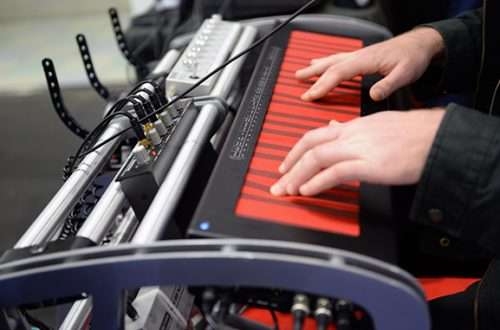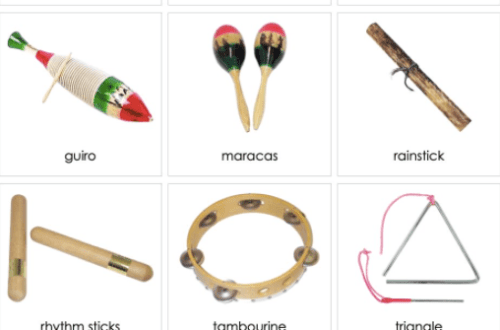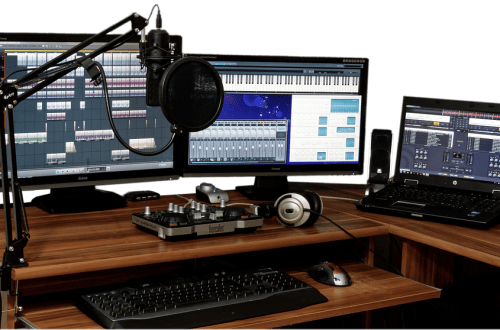
Record piano and piano
Recording with a microphone is always a difficult topic when the goal is to get professional-quality sound. (Users of VST programs and hardware synthesizers are much easier in this respect, they eliminate the problem of selecting and setting microphones) Pianos and pianos are also difficult to record instruments, especially when it comes to recording the sound of a piano playing in an ensemble with other instruments. In this case, it is best to use the help of a professional with the appropriate equipment and knowledge. However, if the goal is to record a solo, for self-control or demonstration purposes, the recording, though more complicated than with other instruments, is perfectly manageable.
Recording with a small recorder If we want to record quickly, of relatively good quality, in order to check our own performance in search of possible errors or interpretation inconsistencies, a small recorder with a pair of built-in microphones, sometimes with the possibility of adjusting their position, will be a sufficient solution. (e.g. Zoom recorders) These inconspicuous devices, although they fit in the hand, provide quite good sound quality – of course it is far from a recording made using a good-quality set of microphones and a recorder, but such a recording allows to assess the quality of workmanship and far exceeds the quality of what is able to register the audio chip of the camera.
Record with a microphone array The minimum necessary for a good piano recording is a pair of identical condenser microphones connected to a good recorder or audio interface. Depending on the setting of the microphones, it is possible to obtain a different sound.
Choice of microphones for recording piano or piano Unlike dynamic mics, condenser mics use a diaphragm that is very sensitive to sound pressure, rather than a heavy and inert voice coil, so they capture sound much more faithfully. Among condenser microphones, one can still distinguish microphones due to the size of the diaphragm and the directional characteristics. We will discuss the latter in the section on microphone placement.
Large diaphragm microphones provide a fuller, stronger bass sound, but they are less able to record transients, i.e. very quick sound events, e.g. attack, staccato articulation, or sounds of mechanics.
Setting up the microphones Depending on the setting of the microphones, you can obtain a different timbre of the instrument, enhance or reduce the reverberation of the room, enhance or mute the sound of the hammers’ work.
Piano microphone Microphones positioned about 30 cm above the environmental strings with the lid open – provide a natural, balanced sound and reduce the amount of reverberation in the room. This setting is favorable for stereo recordings. The distance from the hammers affects their audibility. A distance of 25 cm from the hammers is a good starting point for experiments.
Microphones positioned above the treble and bass strings – for brighter sound. It is not recommended to listen to the recording made in this way in mono.
Microphones directed at the sound holes – make the sound better isolated, but also weak and dull.
Microphones 15 cm from the middle strings, under the low cover – this arrangement isolates the sounds and reverberations coming from the room. The sound is dark and thunderous, with a weak attack. Microphones placed just below the center of the raised lid – provide a full, bass sound. Microphones placed under the piano – matte, bass, full sound.
Piano microphones Microphones above the open piano, at the height of the treble and bass strings – audible hammer attack, natural, full sound.
Microphones inside the piano, on the treble and bass strings – audible hammer attack, natural sound
Microphone on the soundboard side, at a distance of about 30 cm – natural sound. Microphone aimed at the hammers from the front, with the front panel removed – clear with the audible sound of hammers.
Recorder The sound recorded by the microphones can be recorded using a standalone analogue or digital recorder, or using an audio interface connected to the computer (or a PCI card for music recording installed in a PC, far superior to a normal sound card). The use of condenser microphones additionally requires the use of a preamplifier or an audio interface / PCI card with built-in phantom power for the microphones. It should be noted that external audio interfaces connected via the USB port have a limited sampling rate. FireWire interfaces (unfortunately very few laptops have this type of socket) and PCI music cards do not have this problem.
Summation Preparing a good quality piano recording requires the use of a condenser microphone (preferably a pair for stereo recordings) connected to a recorder or audio interface with phantom power (or via a preamplifier). Depending on the position of the microphone, it is possible to change the timbre and make the work of the piano mechanics more or less pronounced. USB audio interfaces record audio in a lower quality than FireWire and PCI cards. It should be added, however, that recordings compressed to lossy formats (e.g. wmv) and CD recordings use a lower sampling rate, the same as provided by USB interfaces. So if the recording is to be recorded on a CD without being subjected to professional mastering, a USB interface is sufficient.





